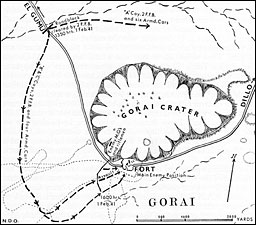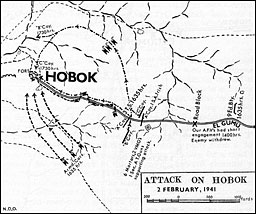
10
Outflanking Moyale
While the South Africans were moving up on the southern borders of Abyssinia, the Italians in Eritrea had thrown General Piatt's proposed programme out of gear. On 16 January, before the British troops had deployed to attack Kassala on 19 January,1 the Italians had begun to pull out of the town. Tessenei was evacuated simultaneously without interference from the British, who were caught on the wrong foot and lost contact till 20 January.
General Piatt's forces then quickly followed up, and General Wavell considered whether an operation towards Asmara was possible on top of new commitments in the Balkans. General Cunningham, encouraged by the South African Engineers' discovery of water at Hagadera, had put forward a proposal to launch his attack on Kismayu. The war had not yet reached the stage where moves could be planned in minute detail in advance, on the nice calculation of logistic possibilities and probable enemy reactions, and General Wavell and his General Officers Commanding had to make quick decisions when presented with opportunities for exploitation.
Meanwhile, 1st S.A. Division had begun its operations to secure and consolidate on the general line Gorai-El Gumu-Hobok. Preliminary investigations were already being made by the South African Engineers for what General Cunningham himself was to describe as 'the most notable engineer task in the operations northwards from Marsabit, and probably of the whole campaign',2 namely the construction of a new road 165 miles long from Marsabit via Kalacha and east of the Huri Hills to Mega, climbing 4,000 feet in the last 20 miles through country which had never been properly mapped before the South Africans arrived.
From Marsabit, the South African Air Force survey Anson was taking every opportunity to extend the area covered, and this work was supplemented by photographs taken by 40 Army Co-operation Squadron, S.A.A.F. during its many reconnaissance flights over the Dukana-Mega-Yavello triangle. Simultaneously, 11 Squadron, S.A.A.F., from Archer's Post and 12 Squadron from Nanyuki kept up attacks on the airfields at Yavello, Neghelli and further north at Shashamanna.
While 25th East African Brigade began operations west of Lake Rudolf to secure and consolidate Todenyang, Namaruputh and Kalam on the western approaches to Murle, at dawn on 1 February the two South African brigade groups marshalled their long lines of vehicles in


